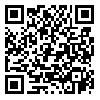BibTeX | RIS | EndNote | Medlars | ProCite | Reference Manager | RefWorks
Send citation to:
URL: http://sjsph.tums.ac.ir/article-1-278-en.html
In large–scale sampling opeartions (e.g. nation-wide health surveys) we always face the problem of non-response item(s) and/or non-response unit(s). In fitting a model to the data we have two groups of variables, namely dependent and independent variables. Non-response may occur for any of these groups of variables. In this paper we assume Y as a categorical dependent variable with three levels, Z and X as independent variables from any kind: scale, categorical, ordinal, etc. We have complete data on the first two variables and we assume that the missing items follow a random pattern (MAR). Then a model is devised based on the likelihood function for the whole data set (including missing values) and estimates of parameters are compared with those obtained by statistical programs such as SPSS, which are only based on completely observed data and ignore units with missing data. Our results show that the likelihood-based model is superior to the standard approach utilized by the software packages. The comparison is made using data on thyriod disease (goiter) obtained by a health survey in Gazvin province.
| Rights and permissions | |
 |
This work is licensed under a Creative Commons Attribution-NonCommercial 4.0 International License. |





